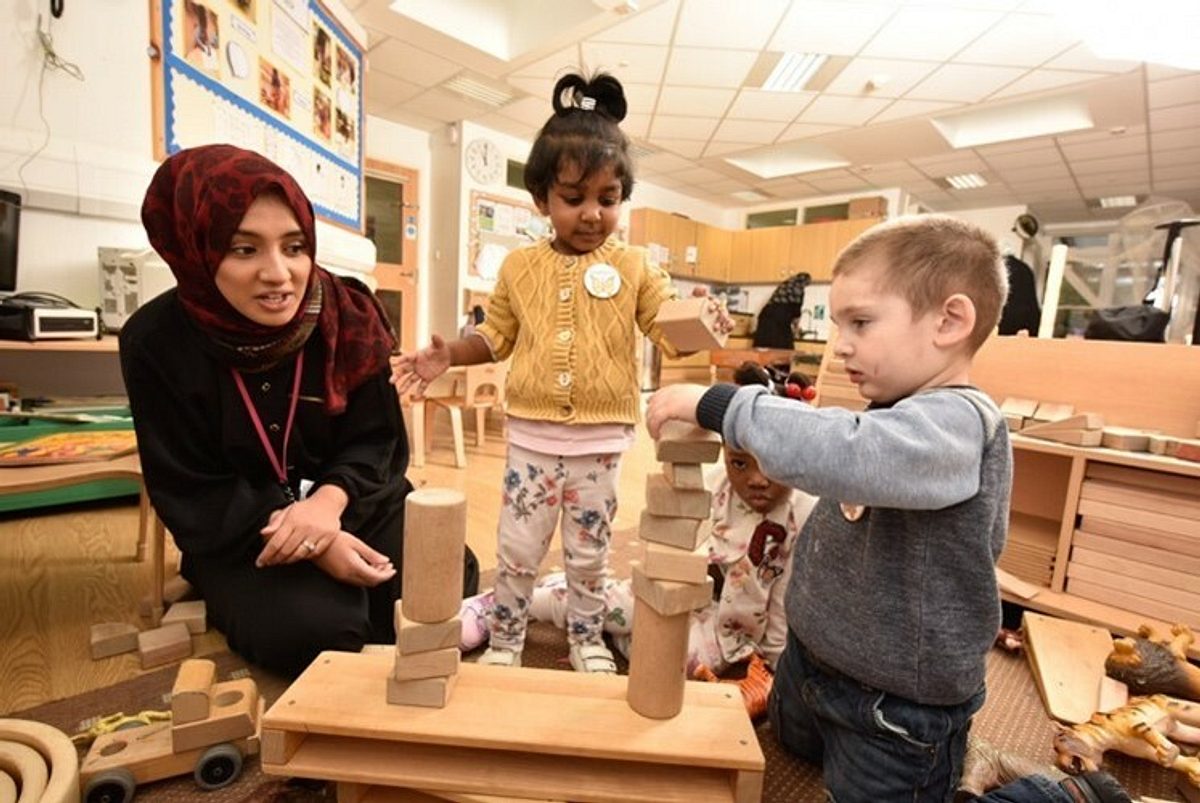Many years ago, I remember observing a child deeply engrossed in playing with a set of small world cows. She was ordering the cows according to their size.
A well-intentioned staff member noticed her play; she was interested and wanted to use this opportunity to engage. She rushed in, looming over “Oh, wow, how many cows have you got there?” She was met with a curt, “I don’t care!” and the child walked off, abandoning her play.
Many of us will have experienced similar situations before, in which we have enthusiastically instigated opportunities to interact with young children, only to be left feeling confused and somewhat demoralised by the child’s response.
So, what can we do to make sure that all our attempts to initiate high-quality interactions are successful?
The ShREC approach
As highlighted in the EEF guidance report Preparing for Literacy: “When done well, high quality interactions often look effortless but they are not easy to do well and professional development is likely to be beneficial.”
The aim of the ShREC approach is to provide early years professionals with a simple and memorable set of specific evidence informed strategies that can be embedded into everyday practice.

So, what does ShREC describe:
- Share attention
Showing genuine interest in what a young child is focused on is a powerful way to establish a connection. It lets them know that you value them and want to spend time with them. By getting down to their level and engaging in their choice of activity, you can tune in and crucially pay attention to what they look at, what they do, and what they say. Sensitively joining in with a child’s play motivates children to communicate with you. - Respond
How we respond to a child once we have established joint engagement is dependent on our knowledge of them as a unique individual. Sensitive, supportive and stimulating responses need to be adaptive and informed by our understanding of the child’s development.
What might an attuned response look like? Responding involves noticing how the child communicates and acknowledging these verbal or non-verbal communications warmly. It involves being aware of your body language.
Responses can involve making appropriate eye contact, looking expectantly, nodding, smiling. Equally, an attuned response could be narrating their activity, a relevant comment that describes what the child can see, hear, feel or articulating the link between their activity and previous learning or experiences. - Expand
Once the ‘back and forth’ rally of engagement is getting underway: the adult and child are sharing attention, the adult is responsively following the child’s lead.
This is where modelling and scaffolding begins with the adult pitching their language just above the level of the child. For example, if a child gives a one-word response such as ‘dog’ the adult should expand on what they say by repeating and building on this utterance by adding a few more words. This helps children to use more complex utterances: ‘Yes, it’s a dog. A big/small/friendly/brown dog!’. Your knowledge of the child will inform what key word/s may be helpful to model. - Conversation
Sustained back and forth conversations that involve many turns are the goal. The beauty and power of conversation is that it offers children an opportunity to practise talking and to receive feedback from an adult. To encourage rich back and forth conversations, comment more, question less.
It is important to note that questions can be useful in helping children to cue turn-taking in conversation. Consider how to use questions sparingly so they are most effective. ‘WH’ and open questions are the most useful as they invite children to elaborate. As children’s conversational skills develop, adults can sensitively challenge children, shaping the conversation to incorporate more abstract topics that are removed from the here and now.

High quality interactions in the Early Years: The ‘ShREC’ approach
A simple, memorable set of specific evidence informed strategies that early years professionals can embed into everyday practice.Uploaded: • 594.7 KB - pdf
Guidance Reports
Preparing for Literacy

Blog
EEF blog: Supporting high-quality interactions in early years
